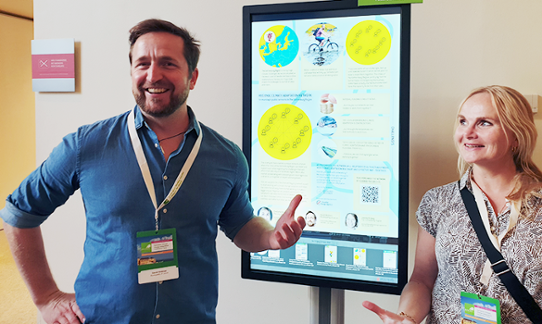The climate is changing, and challenges to society in the form of floods, heatwaves and landslides are becoming more common. The municipalities play a crucial role in efforts to ensure Sweden is adapted to climate change, as they are responsible for actions on a local level. Different municipalities will be affected in different ways, but they will all need to engage in climate adaptation in some form.
According to the Swedish Planning and Building Act (PBL), municipalities are required to address climate adaptation issues in their structure plans. Those who work with climate adaptation in municipalities are often alone in their field, and their role is often largely one of coordination. In this type of role, the ability to receive support and the opportunity to discuss related issues are of great value. The situation and conditions may, however, vary between different municipalities.
Regional climate adaptation network
Several of the municipalities in the Gothenburg region felt that there was a need for more collaboration and more support with regard to their work on climate adaptation. Therefore, in autumn 2018, they launched a regional climate adaptation network as part of the framework for formalised collaboration within the organisation the Gothenburg Region (GR).

The 13 member municipalities are invited to participate in the climate adaptation network. The network meets for half a day, four times a year. The purpose of the network is to allow members to share their experiences and to learn from one another, thereby creating a common knowledge base and consensus. The members come from different backgrounds, and they have different skills that they are able to share.
During meetings, topical issues are raised and the participants have the opportunity to discuss challenges they face in their work on climate adaptation. This gives them new perspectives and the chance to find solutions. The network enables the members to stay updated about other parts of the region, which means that they can identify areas where they can cooperate, create synergies, and avoid conflicts of interest.
The network also provides an arena for shared external monitoring and dialogue with other organisations. In this way, the network functions as a source of support in the municipalities’ work on climate adaptation.
Working committee
A working committee has been formed within the climate adaptation network. This comprises GR’s coordinator for the network and representatives of three of the member municipalities. The role of the working committee is to plan the structure of each meeting and to prepare its content. This is done in accordance with a theme that was jointly decided upon by the network.
Expert group
An expert group, which will participate in one meeting every year, has also been associated with the network. This group comprises researchers from Linköping University, Karlstad University, Lund University and the University of Gothenburg, a landscape architect from the City of Gothenburg with extensive experience from working with climate adaptation in planning, and representatives from the National Board of Housing, Building and Planning and the Swedish Meteorological and Hydrological Institute (SMHI).
More examples of climate adaptation
This is one of many examples of climate adaptation. There are more in the collection of ideas being built up by the Swedish National Knowledge Centre for Climate Change Adaptation at the Swedish Meteorological and Hydrological Institute (SMHI). The collection of examples has the aim of sharing experiences and providing ideas to everyone who works with climate adaptation. Examples describe concrete measures and challenges in several subject areas. They show how different actors have worked to adapt their activities to the climate changes that are already being noticed today and those that we cannot prevent in the future.